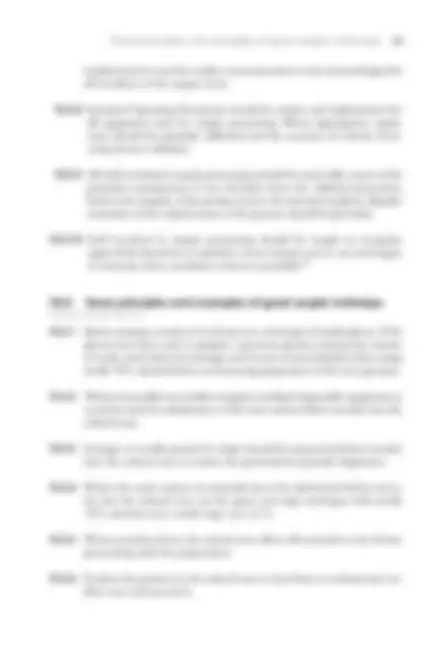





Study with the several resources on Docsity

Earn points by helping other students or get them with a premium plan


Prepare for your exams
Study with the several resources on Docsity

Earn points to download
Earn points by helping other students or get them with a premium plan
Community
Ask the community for help and clear up your study doubts
Discover the best universities in your country according to Docsity users
Free resources
Download our free guides on studying techniques, anxiety management strategies, and thesis advice from Docsity tutors
The importance of quality assurance in aseptic processing, focusing on validation of equipment and processes, control of the aseptic process through Standard Operating Procedures, and good aseptic technique. It covers topics such as personnel and material control, handling of starting materials, and principles of good aseptic technique.
What you will learn
Typology: Study notes
1 / 5

This page cannot be seen from the preview
Don't miss anything!




When products are prepared aseptically in unlicensed units there is usually no possibility of quality control of the product before release and use. Consequently quality assurance of the aseptic process is of paramount importance to ensure the quality of the product. This quality assurance includes:
10.1 Validation
Validation is performed when an aseptic unit is commissioned when any new equipment, process, technique or member of staff is introduced into the process and at defined intervals. The purpose is to show that under simulated conditions aseptic products can be consistently pre- pared to the required quality using the defined process. Any subsequent changes should be assessed in the same manner to ensure that they do not compromise that quality. Validation methods are described in the appendices but it must be remembered that they only represent the capabilities of the aseptic pro- cessing system as tested. To ensure the reproducibility of quality of the product strict adherence to the validated Standard Operating Procedures is essential.
10.2 Control of the aseptic process
10.2.1 All key elements and manipulative steps in the aseptic process, from the starting material to the finished product, should be controlled by
comprehensive Standard Operating Procedures to ensure that the process consistently produces a product of the requisite quality.
10.2.2 Key elements of the aseptic process include:
10.2.3 All aseptic processing must be carried out and supervised by competent staff.
10.2.4 Staff should be fully conversant with all the relevant Standard Operating Procedures before being deemed competent to work in the aseptic preparation unit.
10.2.5 Regular updating of staff on the procedures should be undertaken, documented and the extent of knowledge assessed.
10.2.6 No deviation should be allowed from the Standard Operating Procedures. Should exceptional circumstances necessitate consideration of deviation, this should only be sanctioned by an appropriately experienced and authorised senior member of staff and fully documented. If the changed procedure then becomes normal practice the procedures should be rewrit- ten and revalidated in the usual way to take account of the changed circumstances.
10.2.7 There should be a formal written procedure for the assessment of any proposed change which may affect product quality and if the change is
4 2 Aseptic processing
10.3.7 Keep the critical zone uncluttered and free from previous waste.
10.3.8 Avoid reaching over the product to access equipment or dispose of waste.
10.3.9 Swab the surfaces of bungs that will be penetrated and the necks of ampoules with a fresh sterile 70% alcohol impregnated wipe and allow to dry before proceeding.
10.3.10 Use a strict ‘no-touch’ technique to avoid any contact with any surface which will be in contact with the sterile fluid path.^63 Note: Additional procedures to protect the operator may be determined by the hazardous nature of the product, e.g. radiation protection considerations for radio- pharmaceuticals.
10.3.11 Peel open over-wrapped items pointing towards the air stream from the HEPA filter. Do not tear paper wrappers.
10.3.12 Use closed systems wherever possible.
10.3.13 Where ampoules have to be used make only one withdrawal immediately after opening and discard any remainder (see Chapter 2, definition 9).
10.3.14 When opening glass ampoules cover the neck with a freshly opened sterile 70% alcohol swab before snapping open.
10.3.15 When withdrawing from glass ampoules use a sterile filter straw or filter needle to remove glass particles. Replace the filter straw or needle with a fresh sterile needle before adding the solution to another container.
10.3.16 When using vials avoid aerosols by using pressure equalisation within the syringe or venting devices.
10.3.17 When making additions to infusion bags wherever possible suspend them so that the additive port is in the HEPA-filtered air stream rather than on the work surface.
4 4 Aseptic processing
10.3.18 Take care to insert needle through the centre of the additive port, keeping the needle straight to avoid puncturing the bag. Consider the effect of multiple insertions through the additive port and take steps to minimise if necessary.
10.3.19 Use an appropriate gauge of needle that will minimise damage to rubber bungs whilst still maintaining an acceptable flow rate.
10.3.20 Ensure that all tubing is clear of fluid and securely clamped before removal from the critical zone.
10.3.21 Clean up all drips or spillage of product immediately and disinfect the work surface and gloves between products.
Some principles and examples of good aseptic technique 4 5